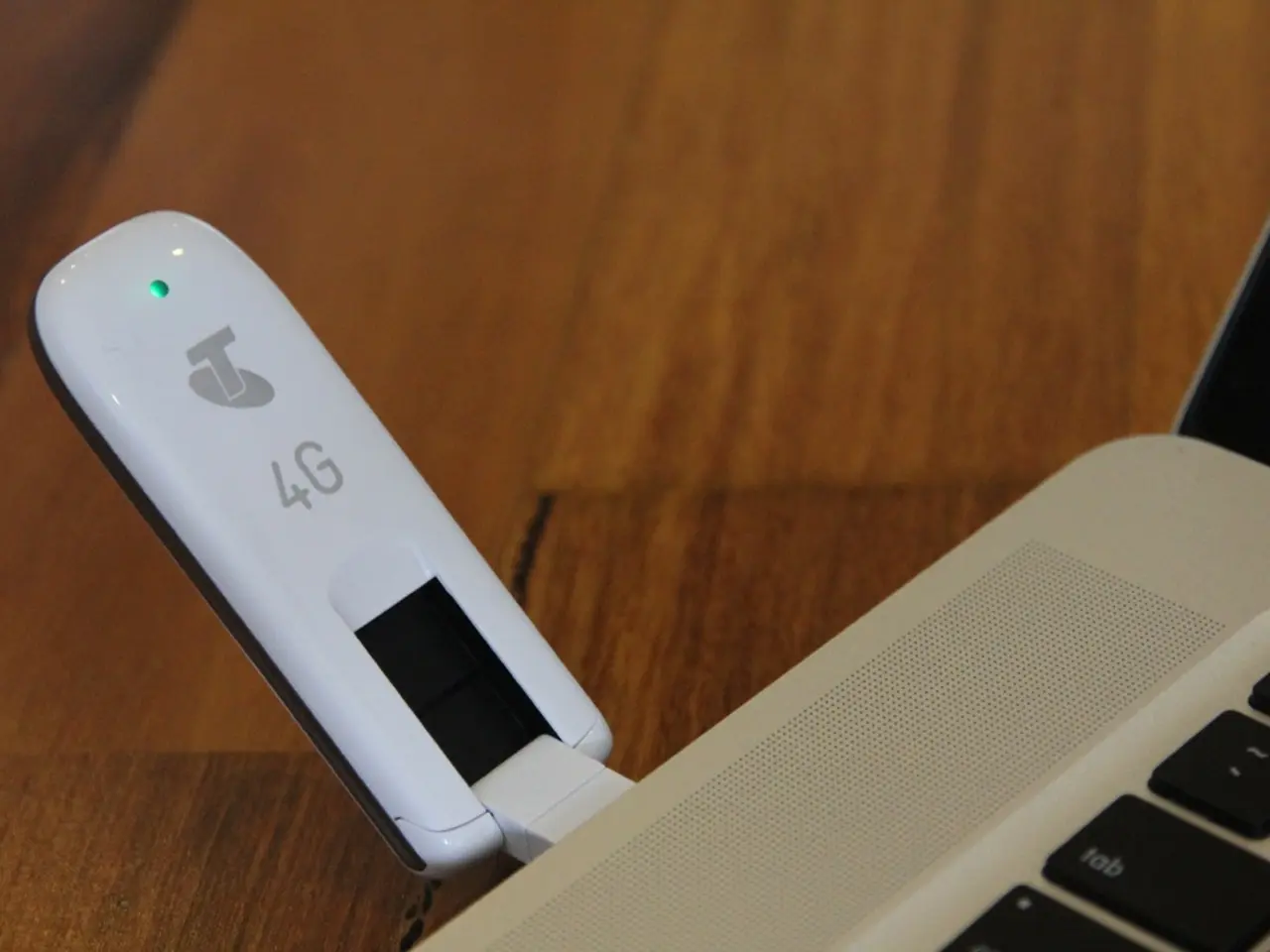Light-Based Data Transmission in Data Communications and Networking: Li-Fi for Wireless Data Transfer
In the ever-evolving world of wireless communication, two technologies are poised to revolutionise the industry - Li-Fi and the upcoming 6G networks.
Li-Fi Technology: A Promising Future
Li-Fi (Light Fidelity), a wireless communication technology that utilises visible light, is swiftly gaining traction in the market. By 2025, it is anticipated that many consumer devices, including smartphones, laptops, and IoT gadgets, will come equipped with built-in Li-Fi receivers, facilitating seamless integration.
Recent standardization efforts, such as the IEEE 802.11bb standard released in 2023, have ensured compatibility and security across devices, paving the way for broader adoption of Li-Fi.
Integration of Li-Fi with 6G Networks
The vision for the future is for Li-Fi to complement 6G networks by providing ultra-fast, secure indoor connectivity, while 6G networks will cover outdoor and wide-area scenarios. This synergy is particularly promising for applications in smart homes, autonomous vehicles, and secure government or defence communications.
Li-Fi's characteristics, such as high bandwidth, low latency, and intrinsic security (line-of-sight communication), align well with 6G's goals for an adaptive, heterogeneous network environment.
The Future of 6G Networks
Currently, 6G networks are in the active research and development phases, targeting ultra-fast, highly reliable, adaptive, and low-latency wireless communication environments. Their future goals include supporting emerging applications such as holographic communication, autonomous driving, and industrial IoT with stringent performance demands.
The Potential Benefits of this Synergy
This integration aims to create an adaptive, multi-layer communication ecosystem where Li-Fi handles high-speed, short-range transmission and 6G manages broad connectivity and mobility. Further research and deployment efforts focus on optimising resource allocation, security, and real-time adaptability in these combined networks.
| Aspect | Current Status | Future Prospects | |-----------------------------|----------------------------------------------------|----------------------------------------------------| | 6G Networks | Research advancing; focus on low latency, massive connectivity, adaptability | Expected to enable new IoT, holographic comms, autonomous systems with satellite integration[3][5] | | Li-Fi Technology | Market growth; devices integrating Li-Fi receivers; IEEE 802.11bb standard in place | Expansion in indoor networks, smart homes, vehicles; secure, fast wireless communication[1] | | Li-Fi and 6G Integration | Conceptual integration underway; Li-Fi as an indoor ultra-fast complement to 6G's outdoor coverage[1] | Hybrid networks leveraging Li-Fi for secure, high-throughput indoor links combined with 6G for wide-area coverage |
Li-Fi employs various modulation schemes, such as On-Off Keying (OOK), Pulse-Position Modulation (PPM), Orthogonal Frequency-Division Multiplexing (OFDM), and Color Shift Keying (CSK). Additionally, Li-Fi is less susceptible to interference than Wi-Fi, as it operates in a different portion of the electromagnetic spectrum.
This promising synergy between Li-Fi and 6G networks promises to usher in a new era of wireless communication, offering faster, more secure, and more adaptable networks for a wide range of applications.
- In the integration of Li-Fi with 6G networks, Li-Fi is poised to deliver ultra-fast, secure indoor connectivity, while 6G networks will cover outdoor and wide-area scenarios.
- The intrinsic security of Li-Fi, due to its line-of-sight communication, aligns well with 6G's goals for an adaptive, heterogeneous network environment.
- Aspects of Li-Fi technology, such as its high bandwidth, low latency, and less susceptibility to interference, make it a promising candidate for indoor networks, smart homes, and vehicles.
- The future of 6G networks includes supporting emerging applications such as holographic communication, autonomous driving, and industrial IoT with stringent performance demands.
- The synergy between Li-Fi and 6G networks promises advancements in wireless communication technology, including faster, more secure, and more adaptable networks in various applications like smart homes, autonomous vehicles, and secure government or defense communications.




